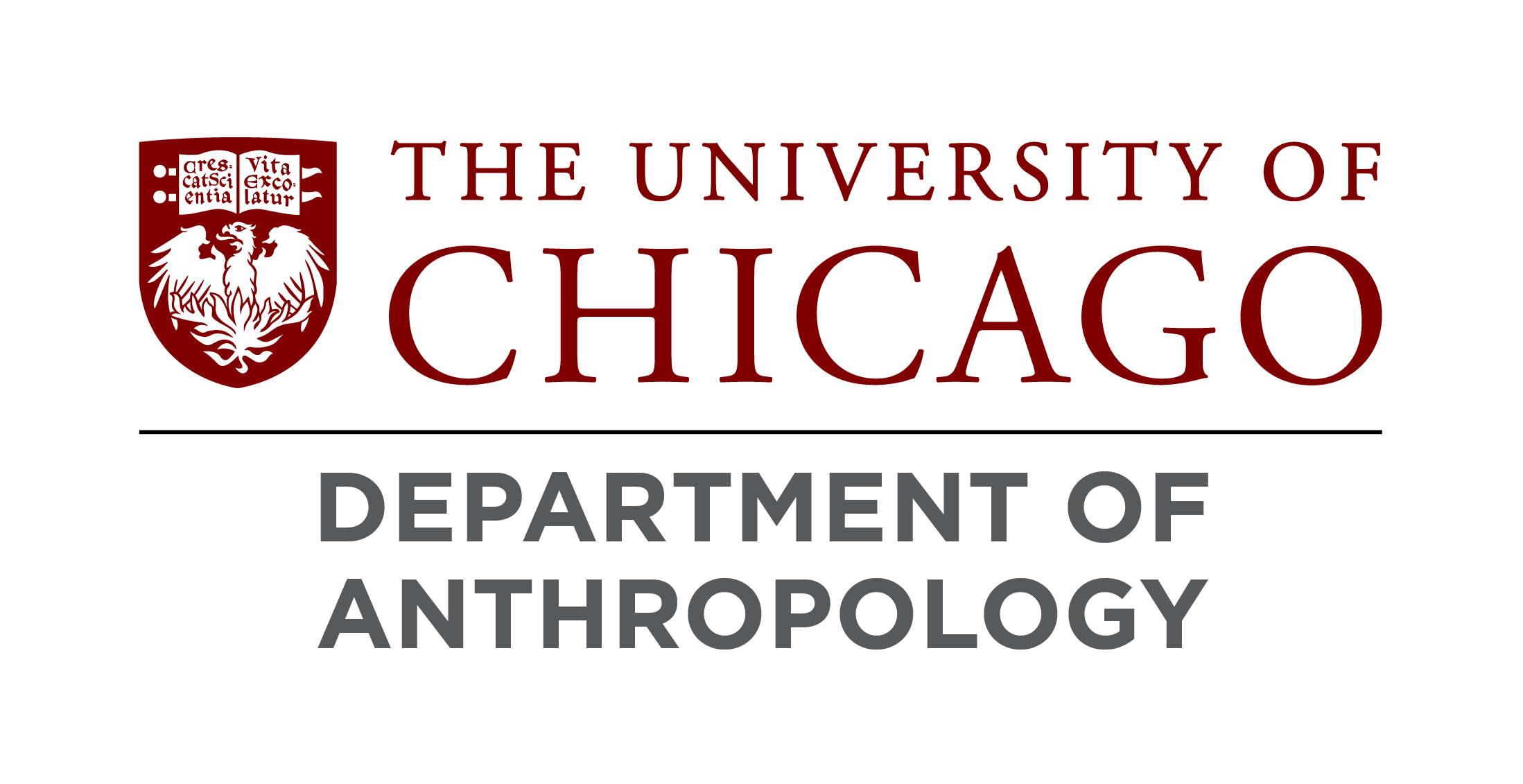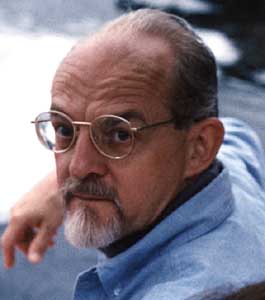A ‘stickler for the truth,’ Russell Tuttle’s career is measured in groundbreaking research and celebrated mentorship
The professor of anthropology is retiring after six decades at UChicago.
By Sarah Steimer
A professor of Anthropology, Evolutionary Biology, History of Science and Medicine and the College, Russell H. Tuttle’s work has affected his students, his field, and even the courtroom. Retiring after six decades, Tuttle can reflect back on a career that led him from a small town in Ohio to field studies in Tanzania to criminal trials in Canada — all while teaching, writing, and editing.
Known for his pioneering functional morphological work on apes via electromyography and his meticulous dissections, Tuttle’s work led to the conclusion — now supported by fossils — that chimpanzees are a poor representation of the locomotive pattern that supported the evolution of human terrestrial bipedalism. Tuttle is also known for his functional interpretation of the 3.66 million-year-old hominid footprint trails at Laetoli, Tanzania.
“Professor Tuttle's impact on my discipline reverberates across generations, touching his academic great-great-great grand-students,” says Nathaniel J. Dominy, one of Tuttle’s mentees and a professor of anthropology at Dartmouth College. “And it speaks volumes that his legacy covers the wide breadth of human evolutionary studies, with the branches of his ‘tree’ extending into anatomy, paleoanthropology, and primatology. How many anthropologists can lay claim to training such a diverse range of scholars? It is a testament to his insatiable curiosity and effective mentorship.”
Tuttle grew up in a small town in North Central Ohio, and attended a branch campus of The Ohio State University in Marion while working. Tuttle jokes that when he tells people he’s in Ohio State’s Alumni Hall of Fame (a 2020 inductee at the Marion campus), they think it’s because he was a star football player. The reality, though, is that he chose to become a physical anthropologist, earning his master’s degree at Ohio State’s main campus, then on to his PhD from Berkeley in 1965 (completed in two years).
As he worked toward his PhD, he conducted research in Orange Park, Florida, (then one of the largest chimpanzee research operations) and his findings on the curvature of the toes — a feature ideal for climbing — caused quite a stir. “I'm a stickler for truth,” Tuttle maintains, a sentiment that has been the cornerstone of his career.
He would find himself at UChicago where, initially, he thought he might become a doctor because he excelled at dissection. He taught medical anatomy, but a course he taught on comparative primate anatomy got him interested in the differences and similarities between apes and people, a focus he’s continued to follow.
Tuttle presented a paper about his work at the British Royal Society, where he was introduced to Mary Leakey, a British paleoanthropologist who discovered the Paranthropus skull at Olduvai Gorge in Tanzania. At her request, Tuttle studied the Laetoli, Tanzania, footprints that her team discovered from the Olduvai Gorge. Contrary to what many scientists believed, Tuttle’s research suggested the prints were probably not made by an Australopithecus afarensis, a chimp-like hominid known for the partial skeleton Lucy from Ethiopia. It was a major finding that shook his field from long-held beliefs.
(In total, Tuttle’s research has taken him to field and laboratory studies in Tanzania, Kenya, Zimbabwe, South Africa, Sri Lanka, Japan, and Perú, and in numerous museums in Europe, Asia and North America.)
Tuttle’s study of the 3.66 million-year-old bipedal footprint trails in Tanzania led to invitations to join a team of barristers and solicitors in Winnipeg, Canada, who were defending two Hispanic men accused of involvement in a murder.
“Lo and behold — something I said I would never do — I got involved in forensic science,” Tuttle says.
The Queen’s Counsel for the prosecution had engaged Louise M. Robbins, a certified forensic anthropologist, who had worked on a different part of the footprints trail. She claimed to have developed a new science of human footprint analysis for forensic use, and her speculations about the makers of some Laetoli prints led Tuttle to question her scientific ability and methods — some of which made unfounded racial assumptions.
This particular trial experience — and his involvement with a few other cases — led to his 2023 book, Footprints from Fossils to Gallows. Written in part as a memoir, his goal was to offer a better understanding of how science can serve the courts — and how claims of new forensic methods should be tested thoroughly by peer review outside the courtroom before it’s used to determine an individual’s fate.
Footprints follows his 2014 book, Apes and Human Evolution, which explores how apes and humans evolved in relation to one another, and why humans became a bipedal, tool-making, culture-inventing species distinct from other hominoids. He’s the author or editor of at least 10 books in all, and is past 20-year editor-in-chief of the International Journal of Primatology for and the book series Developments in Primatology: Progress and Prospects. His honors include the Charles R. Darwin Lifetime Achievement Award from the American Association of Physical Anthropologists, Distinguished Primatologist Award of the Midwest Primate Interest Group, Medallion of the Collège de France, Medal of the Fondation Singer-Polignac, and 50-year Membership and Fellow of the American Association for the Advancement of Science.
“In his early career, he was the first to apply electromyography to investigate the biomechanics and physiological basis for primate positional behavior,” says former student Benedikt Hallgrímsson, deputy director of the Alberta Children’s Hospital Research Institute and head of the Department of Cell Biology of Anatomy at the Cumming School of Medicine. “He coined the term ‘knuckle-walking.’ His investigations of the functional morphology of apes, particularly gibbons and siamangs, was groundbreaking. His detailed dissections and insight into functional anatomy was pivotal in developing an understanding for the anatomical basis for brachiation. Mid-career, he described the Laetoli footprints and his analysis of those tracks has stood the test of time.”
But aside from those research landmarks, he’s also been noted for his professorship: Tuttle was winner of the McGraw Hill Award for Excellence in Undergraduate Teaching from the American Anthropological Association in 2003 and of the University’s Quantrell Award in 2006.
Dominy calls his mentor a “meticulous scientist and writer,” who motivates him to edit his own writing carefully. “Looking back on those years (2002 to 2004), it feels as though he gave me a cheat code — a way of writing and teaching that accelerated my professional trajectory,” Dominy says. “I feel his influence daily, especially when I am working closely with students and postdocs. I laugh inwardly when I catch myself quoting him or invoking his strong aversion toward poor grammar or wooly thinking. But his mentorship extended well beyond scientific writing; I am a better colleague and human being because of him.”
Hallgrímsson also underscores the major impact Tuttle had on him as a person, teacher, and researcher: “I have relied on Russ for advice and mentorship for 35 years, so it is hard to pinpoint a specific way in which he helped my academic career,” he says. “As a supervisor, he is one of a kind. Demanding and exacting, he is also incredibly generous, both with his time and ideas. Russ never expected graduate students to work on his research program. … Instead, he would allow students to develop their own interests and find ways to support their ambitions. He is not a coauthor, much less the senior author, on his student’s papers. At the same time, he made tremendous contributions to them.
“He always prioritized his students’ success over his own.”
 THE UNIVERSITY OF CHICAGO
THE UNIVERSITY OF CHICAGO


